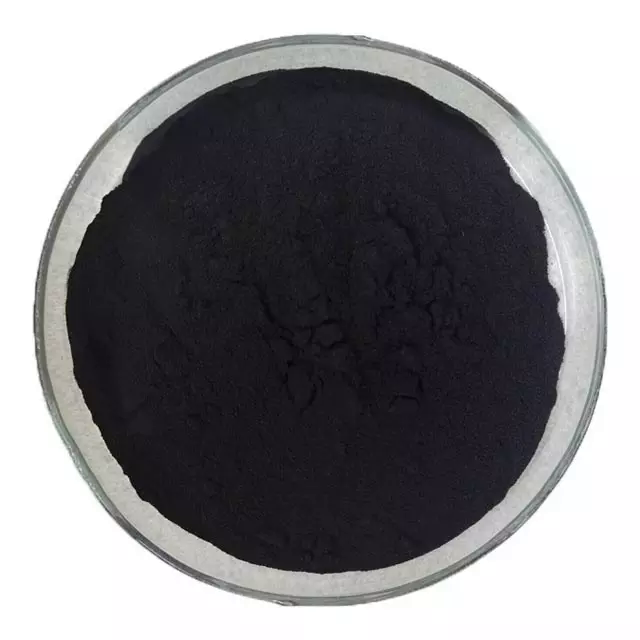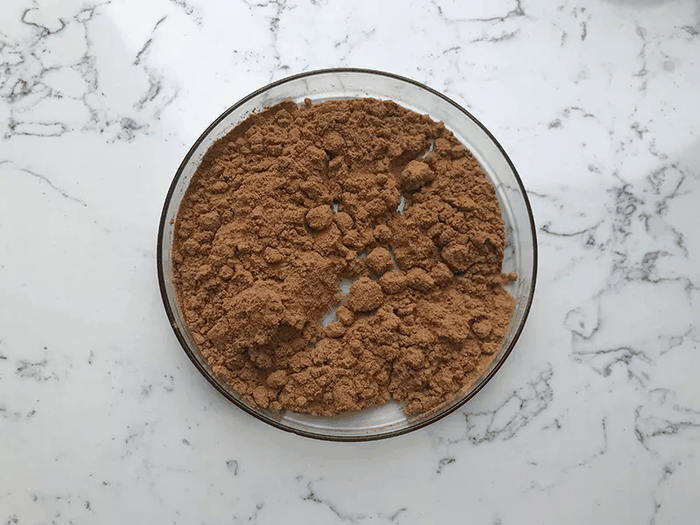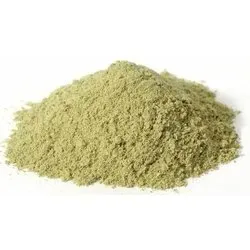PODOPHYLLUM RESIN
Synonym(s):Podophyllum resin
- CAS NO.:9000-55-9
- Empirical Formula: C88H92O34
- Molecular Weight: 1693.65168
- MDL number: MFCD00131926
- EINECS: 232-546-2
- SAFETY DATA SHEET (SDS)
- Update Date: 2025-10-14 17:34:16

What is PODOPHYLLUM RESIN?
Absorption
Oral absorption: Podophyllum is very well and rapidly absorbed after ingestion. Dermal absorption: systemic poisoning was reported after topical application in some cases. Symptoms were delayed between 2-24 hr.
Toxicity
While podophyllin, the herbal extract from which podophyllotoxin is derived, can cause enteritis and potentially fatal CNS depression, podophyllotoxin has been shown to be safe, with minimal toxicity even in large doses. Application can be immediately followed by burning or itching. Small sores, itching and peeling skin can also follow.
Chemical properties
light yellow to brown powder
The Uses of PODOPHYLLUM RESIN
antiallergic
The Uses of PODOPHYLLUM RESIN
Common and plantar warts. Skin carcinomas, in various cancer treatments
The Uses of PODOPHYLLUM RESIN
Podophyllin is a resin extracted from the root of the plant Podophyllum sp. Berberidaceae (mandrake), which contains numerous compounds, among which podophyllotoxin.
Background
Podophyllin is a resin extracted from the roots of Podophyllum peltatum (American mandrake) and Podophyllum emodi, which contains numerous compounds, amongst which is podophyllin (as well as the drug podophyllotoxin). Podophyllin is the principal active component. Podophyllin arrests mitosis in metaphase.
Indications
25% podophyllin (in benzoin tincture) is indicated for the removal of soft genital (venereal) warts (condylomata acuminata).
Definition
Extractives and their physically modified derivatives. It is a product which may contain resin acids and their esters, terpenes, and oxidation or polymerization products of these terpenes. (Podophyllum pelalatum, Berberidaceae).
Indications
Podophyllin in a 10% to 25% suspension in a tincture of benzoin or alcohol can be used with success. Since this compound contains two mutagens, quercetin and kaempherol, it should used with caution in the physician’s office. It should stay on for 1 to 4 hours and be applied every week for 4 to 6 weeks. Podofilox (0.05 mL of 5%) is safer than podophyllin and should be self-applied twice a day for 3 days followed by 4 rest days to complete a treatment cycle. Topical 0.5% podophyllotoxin cream has been used b.i.d. for 3 consecutive days for a maximum of 4 weeks with clearance in 54% of patients. Podophyllum resin (podophyllin), or podofilox, a cytotoxic agent that arrests mitosis in metaphase, is used primarily for treatment of condyloma acuminata but may also be used on all other types of warts. Although now rarely available, a 25% preparation of podophyllum in compound tincture of benzoin should be applied overnight when treating common nongenital warts. A more commonly available preparation, podofilox 0.5% gel (Condylox), should be applied twice a day for 3 days, then discontinued for 4 consecutive days. The same cycle is continued until eradication of the lesions. The effectiveness as well as the irritant potential of this medication may be increased by covering with adhesive tape or plastic tape (Blenderm).
brand name
Biliboldo;Bon korets;Condilomin;Condyline;Dermacytostat;Podofilm;Salicylin-p;Vericap;Wartec;Warticon;Wartkil;Wart-off.
World Health Organization (WHO)
Podophyllum resin, which is extracted from Indian podophyllum, is highly irritant to the skin and mucous membranes and its use in purgatives is now obsolescent. However, topical preparations remain available for the treatment of venereal and other warts and the drug is included in the WHO Model List of Essential Drugs for this purpose. Podophyllin extracts have been demonstrated to have a teratogenic potential which has led to their withdrawal in some countries and restriction of use in others. They are best avoided during pregnancy. (Reference: (WHTAC1) The Use of Essential Drugs, 2nd Report of the WHO Expert Committee, 722, , 1985)
General Description
Podophyllin is an alcoholic plant extract, obtained from the dried rhizome and roots of?Podoplryllui emodi. It is a powder with colors varying from light brown to greenish-yellow and exposure to heat or light turns it darker.
Biochem/physiol Actions
Podophyllin is used to treat condylomata acuminate, a type of venereal warts. It exhibit several biological functions and is mainly used in the treatment of constipation, hepatic disorder and rheumatic arthritis.
Mechanism of action
Podophyllum resin (podophyllin) is a chemically complex extract obtained from the roots of either of the two plants: Podophyllum peltatum (American) or Podophyllum emodi (Indian) (also called Mandrake or May-apple). Podofilox is the most cytotoxic ingredient in podophyllum resin (present in concentrations of 15% to 20% in P. peltatum and 30% to 40% in P. emodi resins) and exerts its effect by binding to intracellular microtubular proteins and thereby preventing the development of the mitotic spindle. In vitro, podophyllum also inhibits RNA synthesis. Podophyllum is used in the treatment of condyloma acuminata and other warts.
Pharmacokinetics
Cell division is arrested and other cellular processes are impaired, gradually resulting in the disruption of cells and destruction of the tissue.
Side Effects
Podophyllin can cause severe irritation and, if absorbed in large quantities, may produce systemic toxic effects. It is inadvisable to apply it in large amounts to mucous membranes, and it is unwise to use it in pregnant women because of its possible cytotoxic action on the fetus.
Safety Profile
Poison by ingestion, subcutaneous, and intraperitoneal routes. An irritant to skin, eyes, and mucous membranes. Questionable carcinogen with experimental neoplastigenic data. An experimental teratogen. Other experimental reproductive effects. Combustible when exposed to heat or flames. When heated to decomposition it emits acrid smoke and irritating fumes.
Metabolism
No data available.
Properties of PODOPHYLLUM RESIN
| storage temp. | 2-8°C |
| form | powder |
| color | brown |
| Stability: | Stable. Incompatible with strong oxidizing agents. |
Safety information for PODOPHYLLUM RESIN
| Signal word | Danger |
| Pictogram(s) |
 Corrosion Corrosives GHS05  Skull and Crossbones Acute Toxicity GHS06  Health Hazard GHS08 |
| GHS Hazard Statements |
H314:Skin corrosion/irritation H360:Reproductive toxicity |
| Precautionary Statement Codes |
P202:Do not handle until all safety precautions have been read and understood. P260:Do not breathe dust/fume/gas/mist/vapours/spray. P280:Wear protective gloves/protective clothing/eye protection/face protection. P303+P361+P353:IF ON SKIN (or hair): Remove/Take off Immediately all contaminated clothing. Rinse SKIN with water/shower. P305+P351+P338:IF IN EYES: Rinse cautiously with water for several minutes. Remove contact lenses, if present and easy to do. Continuerinsing. |
Computed Descriptors for PODOPHYLLUM RESIN
PODOPHYLLUM RESIN manufacturer
New Products
4,4-Difluoropiperidine hydrochloride tert-butyl 9-methoxy-3-azaspiro[5.5]undecane-3-carboxylate Indole Methyl Resin N-Isopropylurea N,N-Dicyclohexylcarbodiimide(DCC) MELDRUMS ACID 5-METHYLISOXAZOLE-4-CARBOXYLIC ACID Magnessium Bis glycinate Zinc ascorbate 1-bromo-2-butyne 2-acetamidophenol 9(10H)-anthracenone Erythrosin B, 4-Piperidinopiperidine 2-((4-morpholinophenylamino) (methylthio) methylene) malononitrile 2,4-dihydroxybenzaldehyde 3-(4-morpholinophenylamino)-5-amino-1H-pyrazole-4-carbonitrile Methyl 2-methylquinoline-6-carboxylate 2,6-dichloro-4-nitropyridine 4-Bromo-2-chlorobenzonitrile 2-(benzylamino)acetic acid hydrochloride 4-(tert-Butoxycarbonylamino)but- 2-ynoic acid 3,4-dihydro-2H-benzo[b][1,4]dioxepine 1-Phenyl-1-cycloprppanecarboxylicacidRelated products of tetrahydrofuran








You may like
-
 9000-55-9 Podophyllum resin 98%View Details
9000-55-9 Podophyllum resin 98%View Details
9000-55-9 -
 Podophyllum resin 99%View Details
Podophyllum resin 99%View Details
9000-55-9 -
 Podophyllum resin 9000-55-9 98%View Details
Podophyllum resin 9000-55-9 98%View Details
9000-55-9 -
 9000-55-9 Podophyllum resin 98%View Details
9000-55-9 Podophyllum resin 98%View Details
9000-55-9 -
 Podophyllum Resin pure CAS 9000-55-9View Details
Podophyllum Resin pure CAS 9000-55-9View Details
9000-55-9 -
 Podophyllum Resin, Packaging Type: HDPE Drum, Grade Standard: Medicine GradeView Details
Podophyllum Resin, Packaging Type: HDPE Drum, Grade Standard: Medicine GradeView Details
9000-55-9 -
 Powder Podophyllum Resin API MANUFACTURER INDIAView Details
Powder Podophyllum Resin API MANUFACTURER INDIAView Details
9000-55-9 -
 Podophylline CAS 9000-55-9View Details
Podophylline CAS 9000-55-9View Details
9000-55-9
